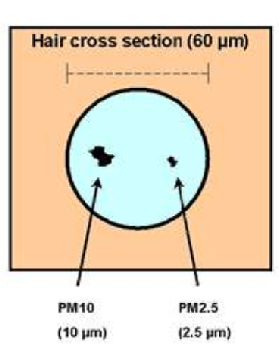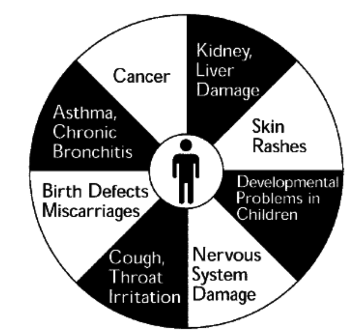AIR POLLUTION
Air pollution consist of chemicals, particulate matter or biological materials that cause harm or discomfort to humans or other living organisms, or cause damage to the natural or built environment. There is great concern over deteriorating air quality as it can contribute to many health problems in our community. Especially for the very young, the elderly and those who already have respiratory problems. Cancers and premature death can also be attributed to poor air quality. Air pollution not only has a real health cost, it also has an economic and environmental cost. Economic effects include the increased use of the health system and reduced activity of affected people. The environmental effects includes damage to plants, animals and man-made structures, such as buildings and monuments.
Weather conditions affect the amount o pollution in the air:
- Wind
- Temperature
- Air pressure
- Cloud cover
- Fog, dew and frost
- Precipitation (rain, snow, hail)
MAIN POLLUTANTS
CO is a colourless, odourless, non-irritating but very poisonous gas.It is a by product of incomplete combustion of fuel such as natural gas, coal or wood.
CO2 is a colourless,odourless, non-toxic greenhouse gas associated with ocean acidification, emitted from sources such as combustion of fossil fuels, cement production and respiration.
- Nitrogen oxides (esp. NO2)
NOx, especially nitrogen dioxide, are emitted from high temperature combustion. They can be seen as the brown haze dome above or plume downwind of cities. Nitrogen dioxide is a reddish brown toxic gas with a characteristic sharp, biting odour. NO2 is one of the most prominent air pollutants, causing respiratory illnesses and reducing lung capacity and lung ventilation.
Under the influence of ultraviolet light NO2 reacts with oxygen (O2) and becomes ozone (O3) — the major component of smog.
- Chlorofluorocarbons (CFC)
Chlorofluorocarbons (CFC) are harmful to the ozone layer. They are emitted from old aerosol cans and refrigeration units. Banned from use since 1989.
Ammonia is emitted from agricultural processes and is normally encountered as a gas with a characteristic pungent odour. Ammonia contributes significantly to the nutritional needs of terrestrial organisms by serving as a precursor to foods and fertilizers. Ammonia is both caustic and hazardous.
- Volatile Organic Compounds (VOC)
VOC’s includes methane and other hydrocarbons, such as benzene, toluene and xylene. They are significant greenhouse gases that plays a role in creating ozone and in prolonging the life of methane in the atmosphere. VOC’s are suspected carcinogens.
Particulates, alternatively referred to as particulate matter (PM) or fine particles, are tiny particles ( solid or liquid ) suspended in a gas. In contrast, aerosol refers to particles and the gas together. Sources of particulate matter an be man made or natural.
- Oxides of Sulphur (esp. SO2)
Sulphur dioxide (SO2) It is a strong, acrid smelling, non-flammable gas. It and has both natural and anthropogenic or man-made sources. It has significant health and environmental effects, including the formation of acid rain and smog and increases global warming.
Oxides of sulphur are common pollutants of the air. SO2 is produced in various industrial processes. Since coal and petroleum often contain sulphur compounds, their combustion generates sulphur dioxide. Further oxidation of SO2, usually in the presence of a catalyst such as NO2, forms H2SO4, and thus acid rain. Acid rain directly attacks the protective coating of plants, acidifies lakes and soils which may result in the formation of substances that are toxic to plants andb animals.




















 NVERSION LAYERS
NVERSION LAYERS  MORTALITY
MORTALITY